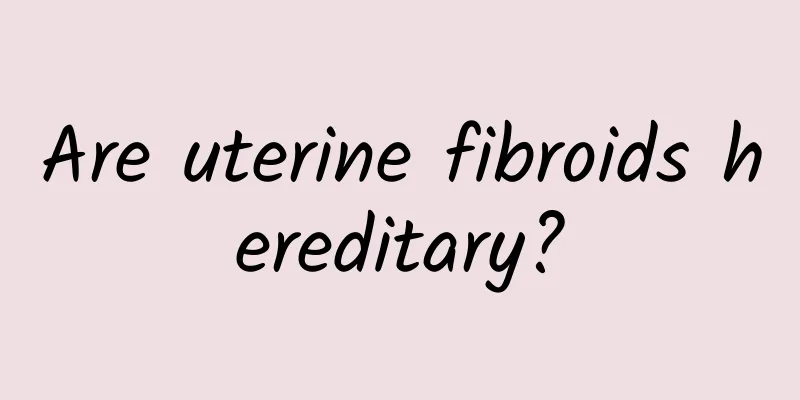Breakthrough in autologous fat transplantation from pears

|
Many women who love beauty hope to escape the fate of being like a pear: not being thin when they should be thin, and not being fat when they should be fat. Autologous adipose stem cell breast augmentation can achieve both slimming and breast enhancement, killing two birds with one stone. The breasts look and feel like your own flesh, just in a different position. After traditional autologous fat transplantation, most of the fat will be absorbed and the survival rate is not high. However, there has been a breakthrough in recent adipose stem cell transplantation, mainly because the stem cells in the fat can make it easier for the transplanted fat to regenerate blood vessels, increasing the survival rate to 70% to 80%. Your own fat, naturally not rejected Autologous fat is a nearly perfect filler. It is soft, tender and natural. There is no need to worry about rejection or deformation, and no massage is required. This makes many women who love beauty but fear pain eager to try it. Dr. Xu Yongkang said that for autologous adipose stem cell breast augmentation, about 250 cc of injection is needed at a time, which can increase the cup size by about 1.5. Too much should not be injected at one time, as it will cause fat calcification and hard lumps. If it is not enough, a second operation can be done after six months. Dr. Xu Yongkang explained that breast atrophy and sagging caused by weight loss, breastfeeding and age are very suitable for autologous fat stem cell breast augmentation. Because the skin has been stretched, the pressure is lower and the blood circulation is smooth, which helps to increase the survival rate of autologous fat cells. Dr. Xu uses water jet liposuction, which uses the power of water as a buffer. The pressure of liposuction is low, which can reduce cell damage and easily maintain the integrity of fat cells, making it most suitable for fat transplantation. The disadvantages of fat transplantation are that the cup size cannot be increased too much at one time, and those who are too thin and do not have enough fat or those with a family history of breast cancer cannot undergo the operation. In addition, it is not recommended to lose weight and eat too little for three to six months after the operation in order to maintain the survival rate of the fat. Dr. Xu Yongkang uses water jet liposuction to extract fat from a large area of the thighs, buttocks, waist and abdomen. The fat cells in this area are also the most suitable for fat transplantation. Water jet liposuction is the most gentle method of liposuction, with the least damage to nerves and blood vessels. It can extract the most complete and healthy fat cells, and then use a special machine to centrifuge pure fat (SVF) containing a large number of stem cells, which are injected into the chest in an evenly arranged layer. This technology and surgical method can greatly increase the survival rate of fat. Early surgical methods can only survive about 30% to 40% of the fat, but this method can increase it to 70% to 80%. After the operation, the maximum increase can be up to 1.5 cup sizes, and for those with special breast shapes or local defects, breast shape repair can be performed. Please ask Dr. Xu Yongkang from Plastic Surgery Q: What if I want to go two cup sizes or more? A: Don’t inject too much fat at one time, as it will cause calcification lumps. Therefore, 1.5 cup sizes at a time is the safest limit. You can have a second surgery six months later. Q: Is the wound big? Will it leave scars? A: The wounds from liposuction and breast augmentation are both small wounds that can be penetrated by a 0.2cm syringe. The wounds from liposuction can be hidden in underwear, and the wounds from breast augmentation are hidden in the areola. There is almost no scar after the stitches are removed! Q: Does the surgery require general anesthesia? A: For surgeries lasting more than three hours, general anesthesia is recommended to avoid the risk of prolonged spontaneous breathing and blood clots. Our clinic will employ licensed specialist anesthesiologists to perform anesthesia throughout the surgery, rather than nurse anesthesia, to ensure your safety! Q: How long does it take for the swelling to subside? Can the fat after the swelling subsides remain for a lifetime? A: Because of the anesthesia used in the surgery and the need to inject more fat to allow room for absorption, there will be a little swelling after the surgery, which will go away in about 2 to 3 weeks. The fat will stabilize 2 to 3 months after the surgery, so it is recommended not to lose weight within three months after the surgery, and not to lose too much weight afterwards. For example, if you lose more than five kilograms at a time, the fat will remain for a lifetime. Q: Who is not suitable for this surgery? A: (1) Those who are too thin and have insufficient fat; (2) Those with a family history of breast cancer; (3) Those with cardiovascular disease, severe diabetes, non-coagulable disease, or those who are pregnant. For more exciting content, please see "Plastic Surgery Magazine" |
<<: Liquid diet helps cancer patients eat Zhongrong recommended menu
>>: New cabbage variety is heat-resistant and can be grown in summer
Recommend
Primary dysmenorrhea and its treatment
When it comes to dysmenorrhea, most female friend...
Can interferon cure cervical erosion? These treatments are recommended for confirmed cervical erosion
Can interferon cure cervical erosion? Although in...
Netizens asked: Will induced abortion lead to infertility?
Induced abortion surgery is welcomed by many peop...
What are the symptoms of early cervical erosion?
What are the symptoms of early cervical erosion? ...
What causes bleeding from multiple uterine fibroids? What to do if bleeding from multiple uterine fibroids occurs?
What causes bleeding from multiple uterine fibroi...
How to effectively treat female vulvar itching
The harm caused by vulvar itching is relatively l...
What are the ultrasound changes of adenomyosis?
Ultrasound is a way to examine adenomyosis. Speak...
What are the treatments for uterine fibroids? How to treat uterine fibroids with drugs
Uterine fibroids are common conscientious tumors ...
How to choose medication after artificial abortion
How to choose medication after artificial abortio...
Causes of normal ovulation bleeding
Normal ovulation bleeding is generally caused by ...
Why endometrial tuberculosis is difficult to cure
After the onset of endometrial tuberculosis, wome...
What are the precautions for flow
Abortion usually refers to abortion. Abortion pre...
What are the sequelae of habitual miscarriage?
Habitual abortion is very harmful to women's ...
Treatment of pelvic inflammatory disease
Treatment of pelvic inflammatory disease: When wo...
How much do you know about the causes of vaginal candidiasis?
Some female friends often wonder why they still s...









